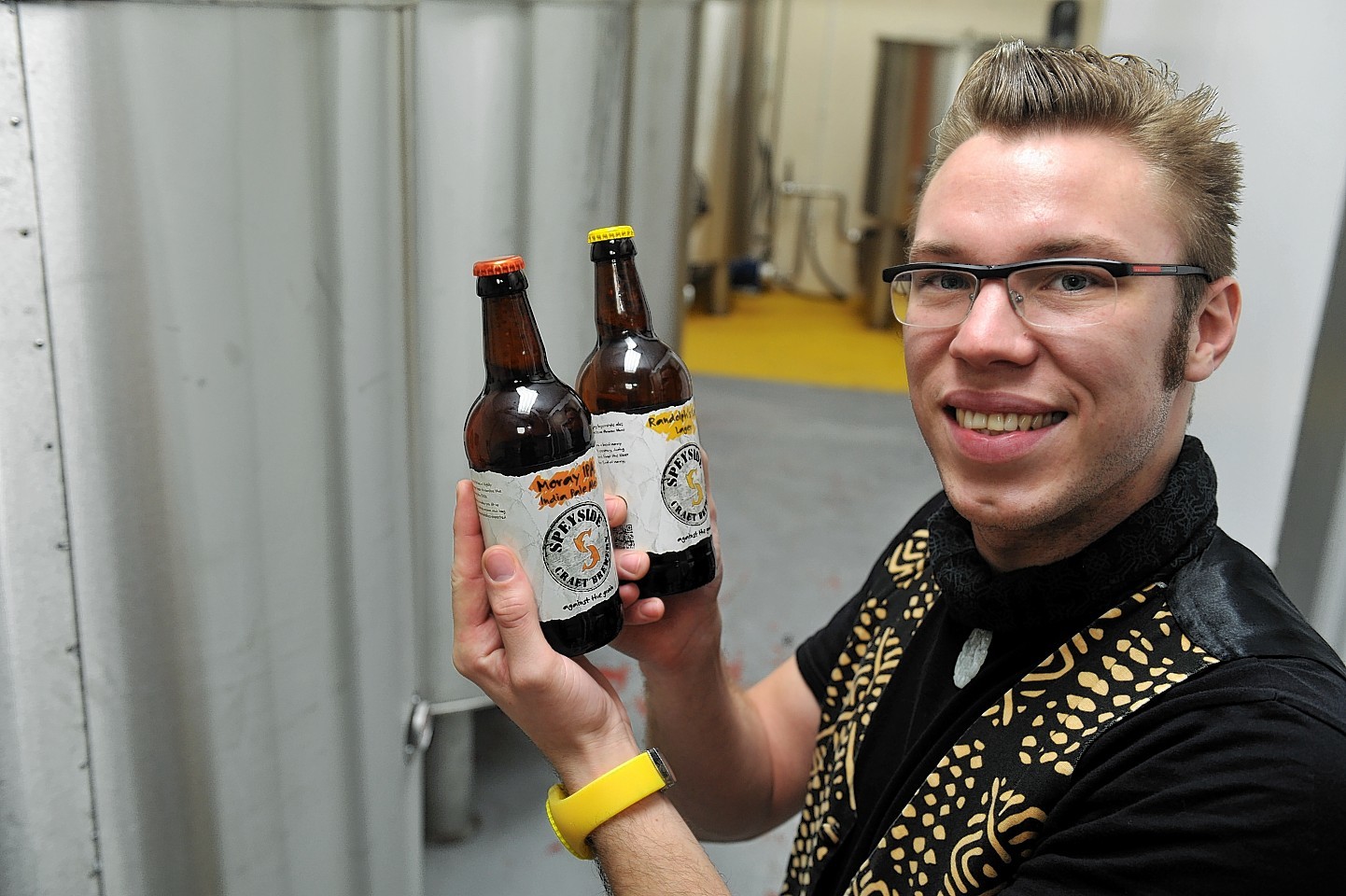Picture the scene – an aspiring young brewer has just nailed his business plan presentation and is getting ready to let his prospective backers sample the goods.
The first bottle of beer is opened and…whoosh…the suds blast up towards the ceiling like champagne that has been uncorked by a Formula 1 driver at the end of a grand prix.
A second bottle is opened and…whoosh…the same thing happens again, and with the remaining four bottles but – unlike in F1 – this was not meant to happen.
The colour drains from the young brewer’s face as his potential backers start to think twice about the wisdom of putting money into a company that makes exploding beer.
“I could see them looking at each other, thinking: Are we sure we’re doing the right thing here?” said Seb Jones, managing director of Speyside Craft Brewery in Forres.
But what felt like a “monumental catastrophe” at the time is now nothing more than a fond memory to look back on with a wry-smile.
A bout of networking put Mr Jones, 28, in touch with Cairngorm Brewery in Aviemore, which opened a £1.6million bottling plant in 2012.
“We got in touch…and rather than doing all of our bottling by hand, we send it down to them,” Mr Jones said, adding: “We were their first contract. They can do 3,000 bottles an hour. It’s all consistent.”
Speyside eventually opened in November 2012 and from then on it has been a tale of steady progress.
The brewery has increased the number of clients it serves directly from 15 to more than 200, stretching from the Highlands to the central belt.
It has a core range of four beers and two seasonal brews at any one time — all inspired by local Moray beauty spots.
Staff numbers have gone from two to six and the team can now pump out 4,500 bottles worth of craft beer a week, compared to 4,200 initially.
There are also plans to install an extra tank this summer, which will boost capacity by 66% and take turnover beyond the £200,000 mark.
The business has won various awards for its beer, including the judges’ choice gold accolade at the 2014 Grampian Food Forum (GFF) Innovation Awards.
Mr Jones’s work in getting the brewery to where it is today has also been recognised.
He won a regional final of the Prince’s Trust Youth Business Scotland Young Entrepreneur Awards and was nominated for the top entrepreneur title at the 2015 GFF Innovation Awards just last month.
Mr Jones, whose striking appearance often makes him stand out from the crowd, could so easily have gone down a far more well-trodden route.
After completing his school education in Moray, he went on to study chemistry at Aberdeen University.
But a career in the oil and gas industry, which is where many graduates in that discipline end up, did not quite grab him.
He said: “Studying chemistry was fun and dynamic and interesting, but working from the bottom as a graduate essentially means you’re filling out spreadsheets and are just 100% a number.
“I knew I didn’t want to be for the rest of my life, so I felt the best thing to do would be to move back to Moray.”
Although Mr Jones had dabbled in beer-making from the age of 13 using kits his dad bought at chemists, he never thought he would become a brewer – but that all changed once he “shut the door on chemistry” and opened his mind.
He said: “I’d always been a sort of hobby brewer, particularly at university. I brewed a beer at my mum’s 50th birthday,and someone tasted it and said: Wow, that’s really nice, you should open a brewery.”
“So, a light went on and I started doing research. The more research I did, I realised — actually I can do this. Between first concept and the launch, there was about 18 months of planning, fund-raising and installation.”
From the outside it may appear that Mr Jones and his team are “living the dream”, so how does he make sure the line between work and fun does not become blurred.
Mr Jones, whose leisure-time activities include playing the piano and juggling, said: “Because we’re such a small team, we can’t afford to just be joking around all of the time. There’s so much that has to be done.
“We work in a brewery, so there’s an element of sampling our beers and competitive analysis – but as a rule we drink more tea than beer in the brewery. To make beer, you need to drink tea.”
